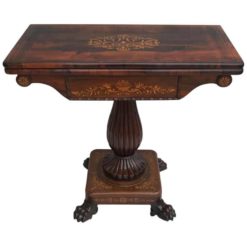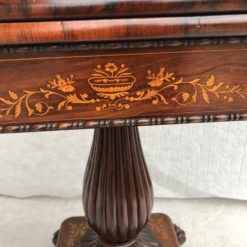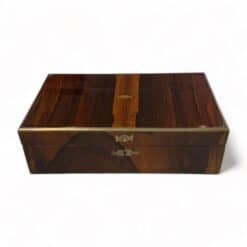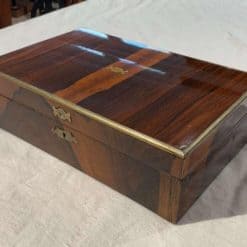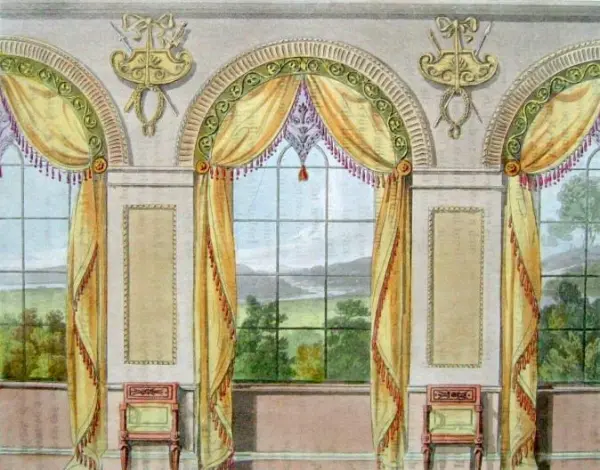Best Sellers
Furniture, Style, Styylish History
Young Royal Taste: Exploring English Regency Furniture
The Power of the Prince Regent In English Regency Furniture
What is English Regency furniture? It’s a term you’ve doubtlessly encountered before, perhaps even while scrolling through our catalog. In this post, we will dive into the history and typical features of the English Regency style. Along the way, you’ll learn about ways you can add this style to your own home and improve your space.
The Patronage of The Prince Regent in Britain
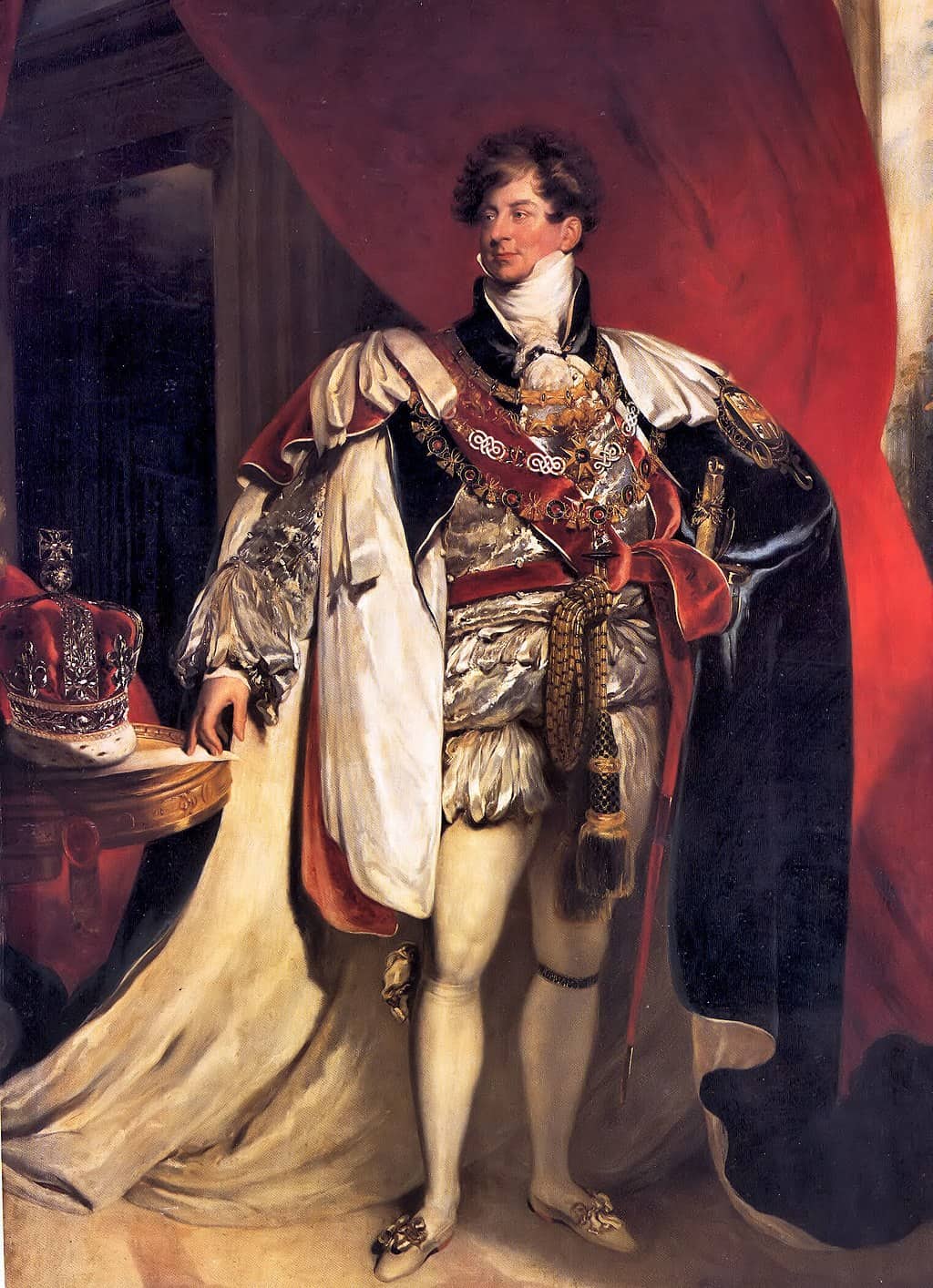
The Regency period occurred in the first few decades of the 19th century. It was named for the nine years King George IV ruled before actually being crowned King (as Prince George). From 1811-1820, he served as Prince Regent. He stepped in to handle the affairs of his father, King George III, who was suffering from mental illness issues.
While there have been Prince Regents in many countries, this title is most commonly associated with George IV and the period he oversaw.
The stylistic moment became synonymous with King George IV’s entire reign, ending in 1830 with his death. Regency-style furniture distinctly adopted the young regent’s tastes for interior decoration.
Indeed, his influence spanned much of cultural life in Britain, more so than most other monarchs. His particular perspectives dictated many trends of the time, from home decor and fashion to architecture design, leading to cross-disciplinary cultural change.
The Popular Prestige of English Regency Era Furniture
The English country home, a seat for aristocrats and landed elites was a widespread mode of domestic life for the wealthy. Often filled with vast amounts of furniture, country homes became the perfect laboratory for attempting new styles of furniture. The Regency era, after all, was expensive, creative, and inventive.
That artistic transition was paralleled by the rapid industrial growth occurring at the time in Europe, particularly Britain. Household furniture for the middle class, from dining chairs, and dining tables, started produced en masse. That trend allowed new ideas in designed to spread more quickly and impact people from many walks of life.

This Antique English Regency Centre Table, made from solid rosewood, embodies the elegance of the period. One of the many exotic woods popularly used in Regency furniture design, rosewood is nearly extinct today. That alone makes this table a real treasure.
This piece features landmark stylistic trappings of English Regency furniture with detailed hand carving on the base and feet. It is fun to imagine this table both back in an 1880s countryside manor, as well as in a bright contemporary interior of the 21st century.
An Era Inspired by French Empire
Regency furniture fits into a fascinating European context as well. It makes sense that the most influential designers of the Regency era, like Thomas Hope, were heavily inspired by French Empire furniture. As you may have read in previous posts, Empire furniture was the product of Napoleon’s culturally dominating reign. The Prince Regent wanted to exceed the standards set by French Empire furniture at home.
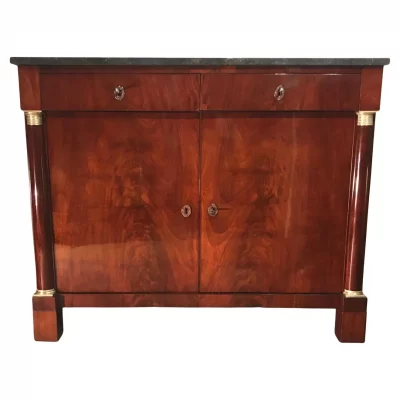
The Empire style featured many Roman elements and symbols, as designers attempted to relate Napoleon to Roman Emperor Augustus when France transformed from a republic into an empire. The heavy incorporation of Greek and Roman idealization fueled a sense of nationalistic pride. Some of the staple aesthetic details of empire furniture can be spotted in a piece like this French Empire Credenza. Empire furniture designs featured large columns, brass elements, and dark mahogany veneer, intending to create a sense of toughness and force.
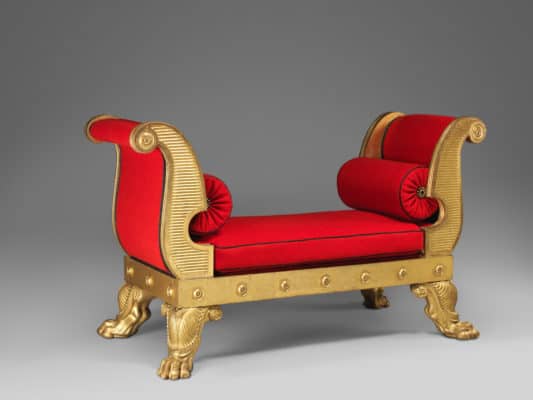
Compare that aesthetic to one of Thomas Hope’s most famous pieces, a gilded wood bench on display at the Metropolitan Museum of Art. Note the lavish textures and colors of the piece. The Roman influence in this piece, as in all of Hope’s pieces, is obvious. But unlike French Empire style, the Regency period was not afraid to be outrageous in its metal accents and elaborate roman motifs.
The theatricality of those pieces presages the 20th-century “Hollywood regency style” that graced the mansions of movie stars in the Golden Age of cinema.
English Status in the Dining Room
Hoping to curry favor with the ruler, courtiers and aristocrats displayed Regency furniture with pride. This Antique Regency Serving Table features a mahogany veneer resembling the kind you would find in Empire furniture. This item would sit in a dining room for servants to use when presenting dinner.

The Prince Regent even made his mark on English homes with the way he served his dinners. Called “service a la Russe”, meals were served by footmen at the Prince Regent’s court. This influenced a shift away from the previous style of “service à la française”, where many dishes were eaten all at once with guests serving themselves. So not only was status sought out with the furniture in the dining room but the developing dining styles added to a perceived prestige.
A Display of Artistic Skill
Furniture makers of the early 19th century certainly had a specific interest in demonstrating their craftsmanship and skill in woodworking. For English Regency furniture makers, this meant hand-carved leg details, floral ornamentation decoration, and intricate claw feet. Works included incredible wooden inlays, highlighted with dark wood veneers.
Carvings were used to create refined detailing and countered some of the golden-plated religious glitz of 18th-century aristocratic design. This English Regency Card Table exemplifies how furniture designers built pieces with simple, straight, and symmetrical lines. Then they would add pompous details, such as the lion’s feet at the base and the flower features on each side of the tabletop.
The card table is an exceptional example of how English Regency furniture strayed from the French Empire Style, which valued conservative opulence over liberal elegance.
Furniture Aesthetic as Politics
No design or style stands alone without the influence of history. Clearly, the Prince Regent’s influence spanned beyond furniture, and beyond the definitions of country borders. The impact of nearby countries and the political and economic status of Europe played a role as well.
The fascinating history of English Regency furniture doesn’t end here. Browse the great variety of pieces on Styylish.comto find more unique treasures from the early 19th century. Take charge of your interior and reign over a perfectly designed home.

